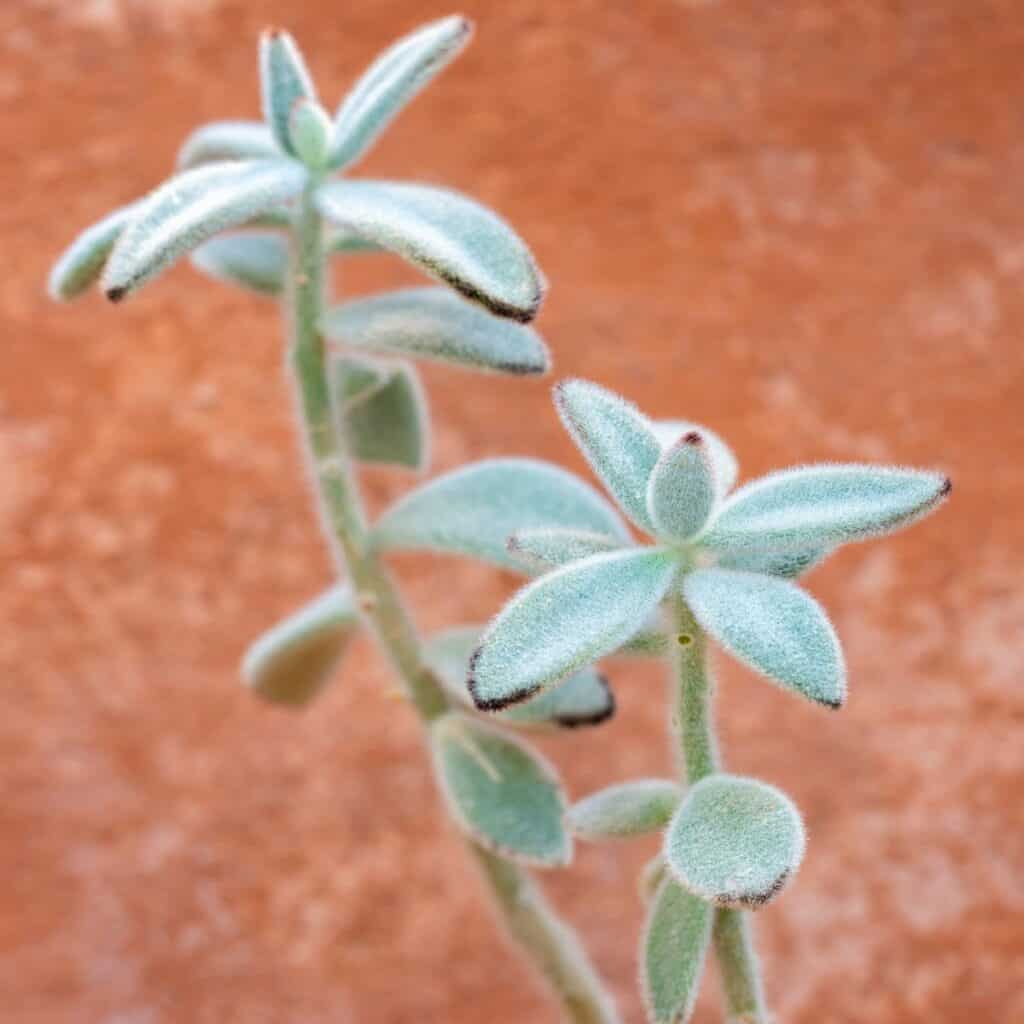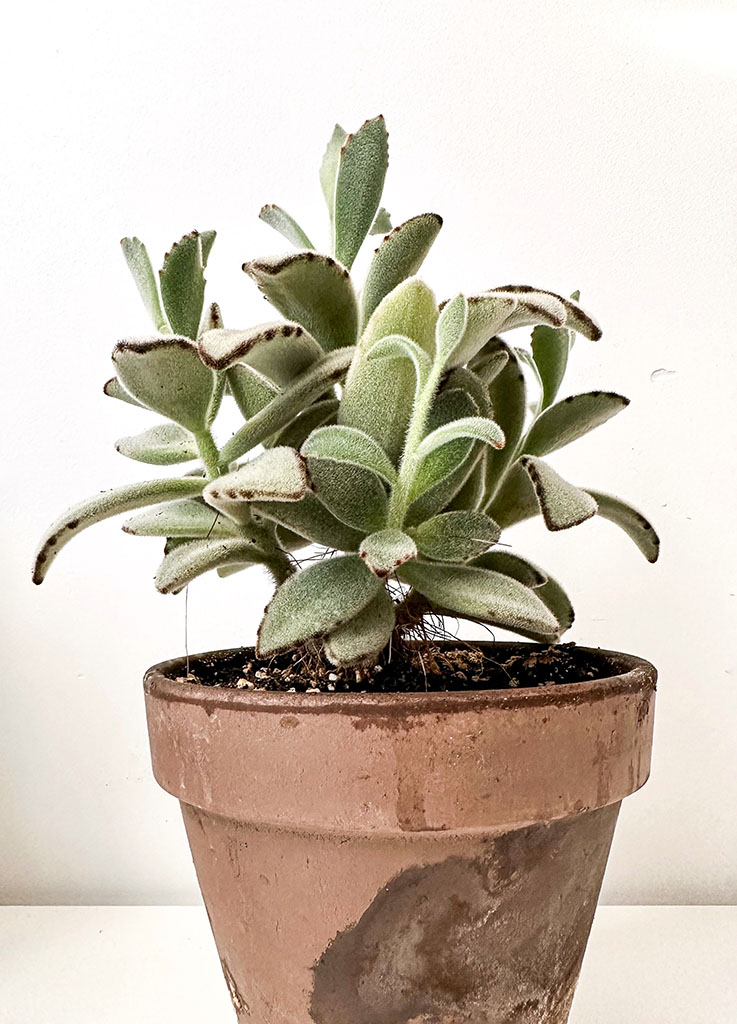To fix a leggy Panda Plant, you should prune it back and provide it with more sunlight. The Panda Plant is a popular succulent known for its unique appearance and easy care requirements.
However, sometimes these plants can become leggy, with long, stretched-out stems and sparse foliage. If you notice your Panda Plant looking a bit sparse and stretched, don’t worry, it can be fixed. We will discuss some simple steps you can take to fix a leggy Panda Plant and help it regain its compact and bushy appearance.
By pruning back the stretched stems and providing the plant with more sunlight, you can encourage new growth and create a more robust and attractive plant. Let’s dive into the details of how to fix a leggy Panda Plant.

Credit: succulentalley.com
Understanding Leggy Panda Plants
Leggy panda plants are a common issue among indoor gardeners. The factors contributing to their leggy growth can vary, but one of the main reasons is inadequate sunlight. Panda plants require bright, indirect light to thrive. If they don’t receive enough light, they start stretching towards the nearest light source, resulting in leggy stems.
Another factor to consider is the watering routine. Overwatering can cause the roots to rot, leading to unhealthy growth. It’s important to provide well-draining soil and water only when the top inch of soil feels dry. Pruning is also essential for maintaining bushy growth.
Regularly cutting back excessively long stems encourages branching and helps create a more compact plant. By understanding the common issues and implementing these guidelines, you can fix a leggy panda plant and promote healthy growth.
Signs Of A Leggy Panda Plant
A leggy Panda Plant may exhibit signs of sparse foliage, long, thin stems, and a lack of compactness. These symptoms can occur due to factors like insufficient sunlight or excessive fertilizer use. To address these issues, it is important to provide the plant with adequate light by placing it near a bright window or using artificial grow lights.
Pruning the plant and removing the leggy stems can help promote bushier growth. Additionally, avoid overfertilization and ensure proper watering to maintain a healthy balance. Regularly rotating the plant can also prevent it from leaning towards the light source. By addressing these concerns, you can help your leggy Panda Plant regain its compact and lush appearance.
Step-By-Step Guide To Fixing A Leggy Panda Plant
To fix a leggy Panda plant, start by identifying the appropriate stems to prune. Proper pruning involves removing the long, thin stems to encourage bushier growth. Pinching the plant’s stems is essential for achieving a fuller appearance. Assess the lighting conditions and adjust the plant’s location accordingly, ensuring it receives sufficient light for healthy growth.
If natural light is inadequate, supplement it with artificial lighting. Watering frequency and technique should be based on the plant’s needs, ensuring it is not over- or under-watered. Select the right soil mixture to provide adequate nutrients. Applying fertilizer regularly promotes healthier growth.
Stem cuttings can be used for propagation. Create an ideal rooting environment for the cuttings before transferring them to new pots. Train the plant to grow upright by using stakes or trellises for support. Regularly adjust the support structure as the plant grows.
Implement preventive practices to avoid legginess. Lastly, maintain regular care and monitoring, making necessary adjustments as needed.
Frequently Asked Questions Of How To Fix A Leggy Panda Plant
How Do I Fix A Leggy Panda Plant?
To fix a leggy panda plant, prune it back by cutting off the tall, weak stems. This will encourage the plant to grow new, more compact and sturdy stems. Make sure to use clean and sharp pruning shears, and cut just above a leaf node to promote healthier growth.
Regular pruning will help maintain the plant’s shape and prevent it from becoming leggy in the future.
Why Is My Panda Plant Becoming Leggy?
A panda plant becomes leggy due to insufficient sunlight or limited access to natural light. Lack of light causes the plant to stretch out in search of more light, resulting in elongated, weak stems. To prevent this, place your panda plant in a bright location where it can receive at least 6 hours of indirect sunlight each day.
Conclusion
Fixing a leggy panda plant is a fairly simple process that can be accomplished with a few key steps. By understanding the causes of legginess, such as lack of light or improper watering, and making the necessary adjustments, you can encourage compact growth and a healthier plant overall.
Trimming back leggy stems and providing support through the use of stakes or a trellis can also help redirect energy towards more compact growth. Additionally, repotting the plant and ensuring it has appropriate soil conditions and fertilization can further promote healthy growth.
Remember to regularly monitor your panda plant and make any necessary adjustments to maintain its compact form. With a little patience and care, you can enjoy a thriving panda plant that adds a touch of beauty to your indoor space.

